Learning Tools
Learning Tools
Grassroots Academies

“The first time I attended Grassroots Academy was in 2008 in Cebu City, Philippines— I was so proud and inspired to learn about the different practices from women from different countries. It motivated me to be a leader in a wider network, and to take part in a global organization.”-
Jhocas Castillo, DAMPA, Philippines
What are the Grassroots Academies?
Grassroots Academies (GA) are events where many grassroots organizations meet as learners and teachers to exchange successful community development and resilience strategies, discuss barriers, and make policy recommendations with the support of partners. Grassroots academies can strengthen partnerships and multiply the impact of local practices by involving mainstream actors—NGOs, government, funders, academia, and private sector partners—in interactive analysis and problem-solving sessions. In 2006, the Grassroots Academy Methodology won the Dubai International Best Practices Award for Sustainable Development. The Huairou Commission facilitates grassroots academies prior to each major global conference, where grassroots women come to participate as stakeholders. In this way, through the GAs, grassroots women consolidate their collective position and priorities.
Grassroots Academy convenes at the 2019 UN GPDRR
Grassroots Academy convened on May 13-14, 2019 at the UN DRR biennial Global Platform for DRR highlighted the need to accelerate implementation of government commitments to community-led inclusive disaster risk reduction and engagement of architects of climate finance systems to explore the creation of financial mechanisms that resource poor people’s organizations to accelerate local climate adaptation and disaster risk reduction. The discussion engaged the complex range of risks and vulnerabilities faced by grassroots women, the strategic role of grassroots risks assessment as learning and advocacy tools, grassroots driven urban and rural strategies for climate resilient agriculture, food security, livelihood diversification, emergency preparedness, disaster response, recovery and negotiating partnerships. The final session of the Academy included a dialogue with the Executive Director of CEPREDANAC and the World Bank Vice President for Sustainable Development, who carried grassroots leaders’ recommendations into the GPDRR plenary session on women’s leadership in advancing resilience.
Risk, vulnerability and opportunity mapping
“I learned about the community mapping through our work on the HIV-AIDS. Grassroots women were mapping and in depth analyzing the magnitude of the epidemic impact on the community. They drew on the indigenous knowledge that existed in previous days to solve problems and to harmonize all of this they conducted community feedback meetings.”- Violet Shivutse, Shibuye, Kenya
Uganda: grassroots women appointed as community risks experts
Facilitated by SWID, Uganda, grassroots women used risk mapping tools to identify climate vulnerabilities in rural and urban communities that were related to flood, droughts, food insecurity, poor sanitation etc. Following this mapping, 130 grassroots women have been formally appointed as risk experts by the Jinja Municipality. They were remunerated to address issues of urban flooding through planning and improved drainage systems.
What is risk, vulnerability and opportunity mapping?
Community mapping is a versatile participatory research tool that can be used to map various development risks and vulnerabilities alongside resources. It raises awareness, informs decision-making and engages community members in a structured learning, documenting and analysis process. Armed with conclusions based on research, mapping empowers grassroots women as knowledge creators and leaders. Mapping is used to gather local data and mobilize community members and other stakeholders to identify and address community needs together through collective advocacy and action planning. Mapping and risk assessments’ findings are frequently utilized in Local to Local dialogue sessions with local government officials to discuss community development priorities and lobby for priority actions.
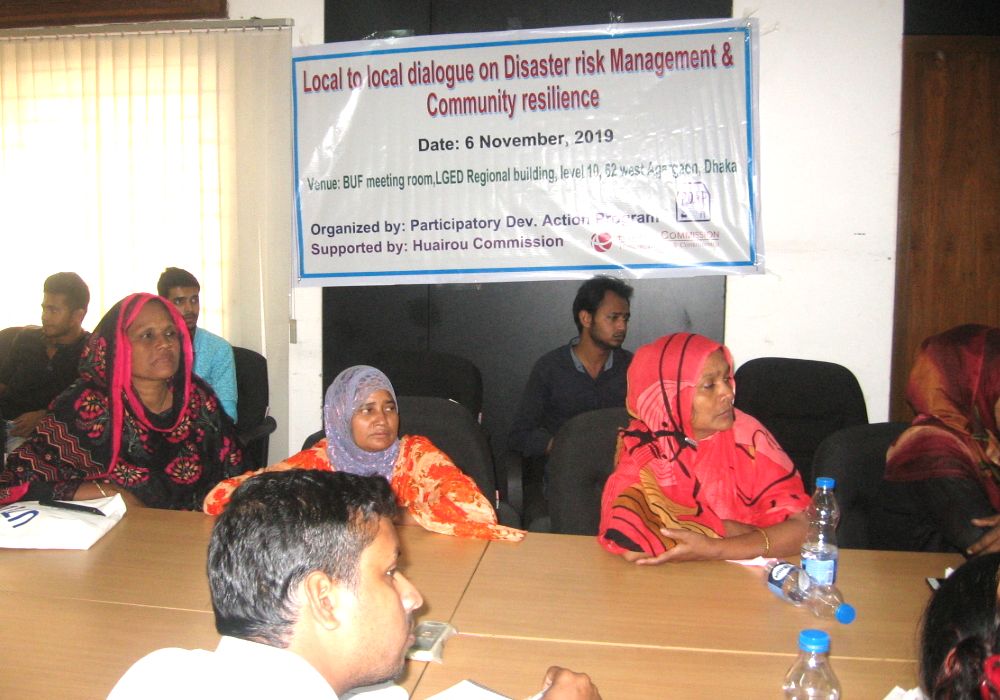
Bangladesh: community resilience plans based on risk and vulnerability maps
After risk mapping convened in seven communities in Mirpur, Dhaka district, grassroots women from Participatory Development Action Platform in Bangladesh presented their findings and collectively written community action plans to the government authorities through local to local dialogues. The local Ward Counselors committed to support the leaders in implementing the action plans. In the following years, the authorities involved women in various community development activities, including working with women leaders to provide nutrition for the malnourished children and pregnant women.
Community monitoring or Watch-Dog groups
Guatemalan grassroots women monitor COVID-19 social stipends
Since the COVID-19 crisis, grassroots women leaders in Guatemala working with Fundación Guatemala have formed monitoring groups to track community member’s access to and delivery of government social stipends to the entitled poor community households. The women work to prepare community reports on bonuses’ delivery. They also coordinate with national authorities responsible for distribution of the stipends over the real situation of social bonus access in communities. In this regard, they reach out to entitled community members to make sure they undergo the necessary procedure to claim their stipends.
In addition, the grassroots women leaders work to provide responsible authorities with regular updates regarding the dynamic of community risks and vulnerabilities elevated by the corona virus pandemic, highlighting changes over time. In this regard, the women make sure that entitlements stay up to date with the needs.

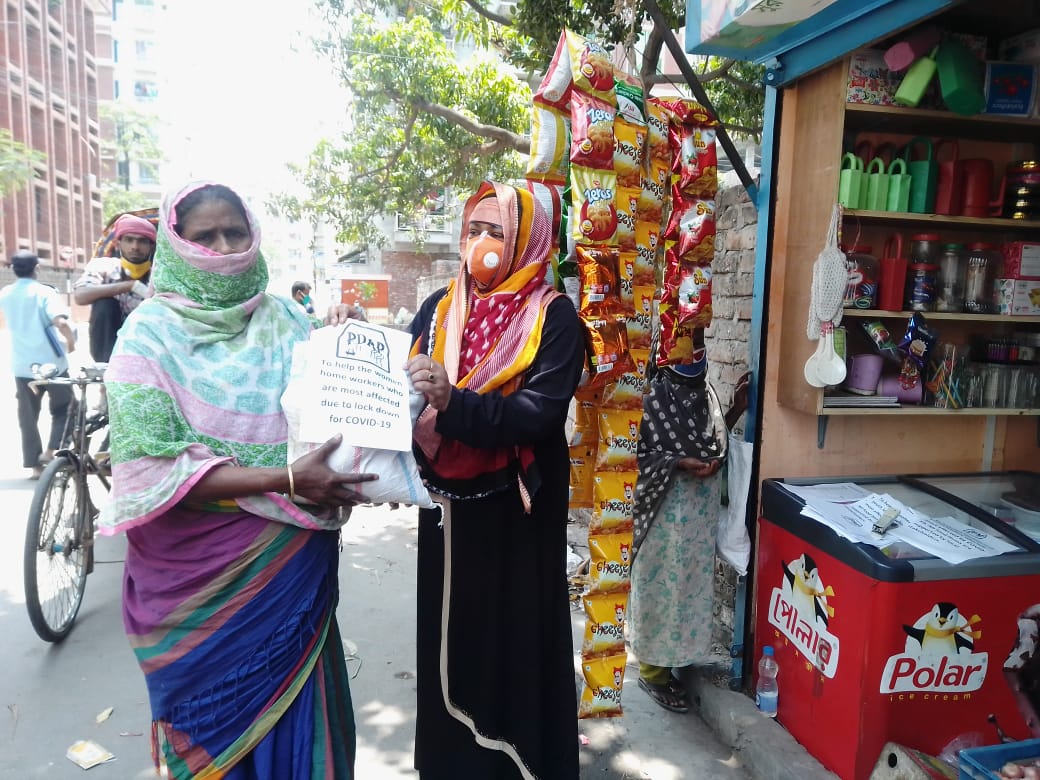
What are the monitoring or watch-dog groups?
Community monitoring groups, sometimes known as Watch-Dog groups or Vigilance Committees, is a collective community approach to institutional accountability and transparency. Watch-Dog groups serve to ensure that women’s rights to land and property are protected, they promote institutional accountability against illegal practices, such as land grabbing, or crimes against women. In addition, this collective community action empowers women to challenge cultural norms that are damaging to their welfare, such as repossession of land and property. The Watch-Dog groups were first introduced as an accountability tool by grassroots women in Kenya who mobilized to ensure land justice to women and to secure their tenure against land grabbing and repossession.
Kenya: watch-dog groups ensure security of tenure for widows and mothers
“Cry with one eye open” is a saying widely known among widows in Nairobi, Kenya, where MLAHARA works through community watch-dog groups to ensure that women’s rights to land are protected.
Mostly consisting of grassroots women, who receive community paralegal training, the groups also include village elders, local administration officials and local Land Board members to liaise with institutions and village councils to obtain land ownership or security of tenure certificates and to ensure institutional protection of land rights of women. Before the Watch-Dog groups, one local community had 32 land dispossession cases open for 5-12years, meanwhile leaving women without security of tenure. Within the first year of Watch-Dog groups , 12 cases were solved within the community through remedial mechanisms, 5 cases were resolved in court while the community saw a 65% drop in annual repossession cases. Liaising with administrative institutions, they aid quicker resolution of open cases. Institutions become more open to collaborating with communities. Grassroots women position themselves as experts in land and property rights, and, as a result, they get invited to become members of the district level land control boards.
Peer Learning Exchanges
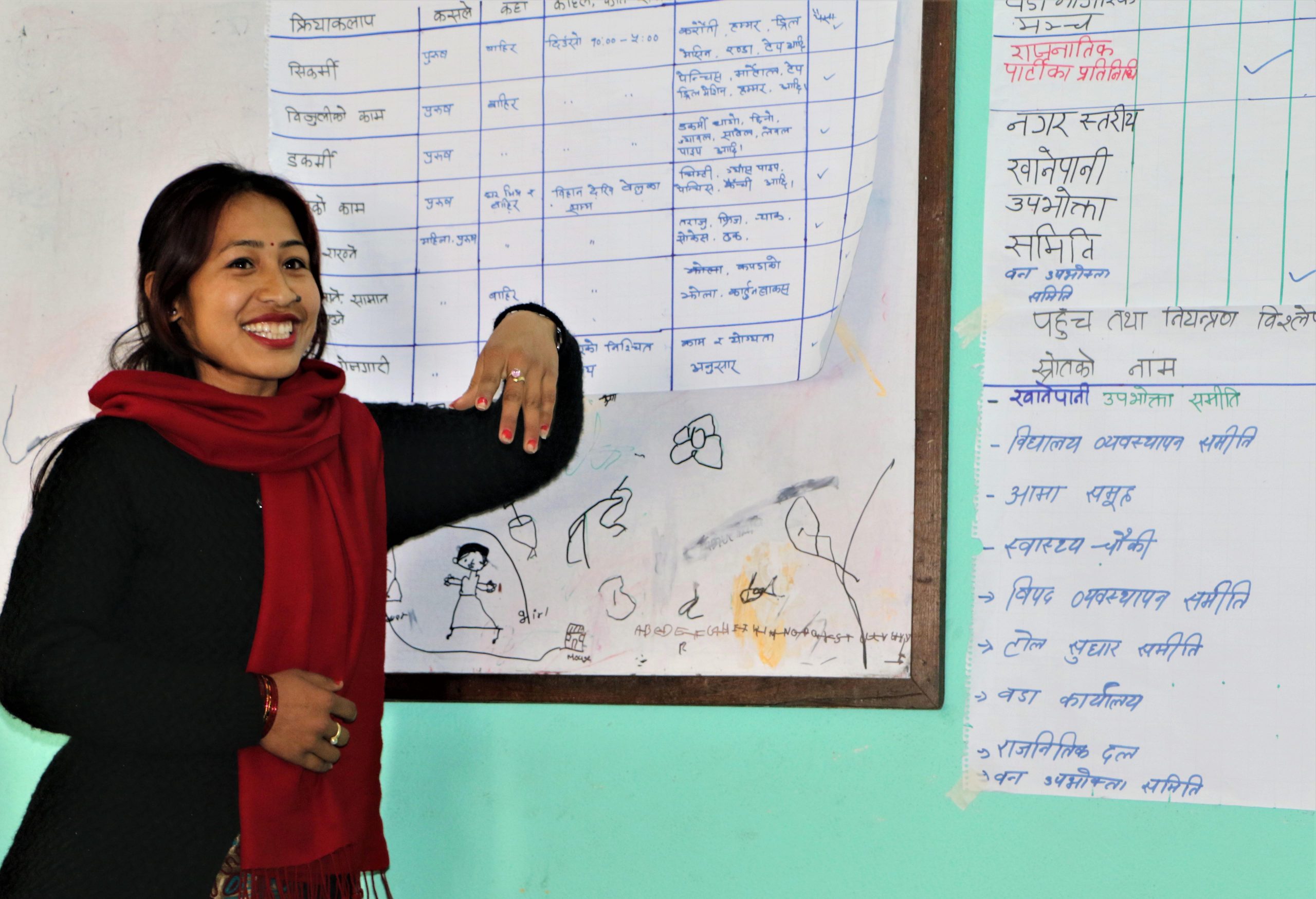
“My second peer exchange was in 2007 in Kenya. I still remember the big hall and all grassroots leaders who were there. I realized that we share skills and knowledge to build women’s leadership. From then to now we are still using what we learned.” – Naseem Shaikh, SSP, India
What are peer learning exchanges?
A Peer Learning Exchange is the grounding principle of Huairou organizing and a learning tool for grassroots women leaders to share with each other knowledge and practices on a particular theme and to generate a collectively owned pool of practical knowledge to be adapted in the local context. It is a horizontal learning process grounded in experiences on the ground and local data that aims to empower women as leaders and experts of development issues. The peer learning practices started all the way back in the Grassroots Tent in Beijing in 1995, where women came together to uncover global issues faced by grassroots women, such as security of tenure. Peer exchanges are different from traditional training because grassroots women are both learners and teachers.
Zimbabwe, India, and Nepal: transfer of knowledge enhances resilience
Over the last two decades, hundreds of grassroots leaders from all over the world have participated in peer learning exchanges within and outside their countries to learn and teach one another their most successful practices.
A peer learning exchange between Ntengwe and ZPHCA, Zimbabwe (Zimbabwe Parents of Handicapped Children Association) allowed Ntengwe to share its climate resilient farming and soil and water conservation practices with the ZPHCA and learn from ZPHCA’s climate change adaptation practices, and Community Resilience Fund Operations.
A livelihoods and enterprise focused peer exchange in 2018 between grassroots leaders from Nepal and India brought home to Nepali women entrepreneurs the importance of diversifying businesses as a means of reducing risks, preparing business plans and being mentored by mature grassroots entrepreneurs.
Local-to-Local Dialogues (L2L)
Kenya: women secure access to land following L2Ls
In 2018 Shibuye in Kenya facilitated 30 grassroots women leaders to conduct local to local dialogues with members of their County Assemblies. Following these meetings, 63 members of the County Assembly worked closely with grassroots women to help secure land rights. As a result, women could lease land and to stabilize livelihoods and food security for grassroots women and their communities in the face of climate related shocks and stresses.

What are the Local-to-Local Dialogues?
Local-to-Local Dialogues (L2L) are an organizing and partnership building tool that positions grassroots women as community leaders and empowers them politically as representatives of community interest and constituency. L2Ls raise awareness about community issues of concern by collectively convening and informing local decision makers. Local to local dialogues help grassroots women organize around their own priorities and negotiate with local authorities to improve access and control over resources and services, and to influence development planning and implementation. They support women to influence public decisions and to place community priorities and practices on local government agendas. Frequently, L2Ls generate political leverage for grassroots women and lay foundations for formal partnerships between grassroots women’s groups and local authorities.
Czech Republic: L2L advances mothers to local government positions
The Mothers Center (local representative of the national Network for Family) in Breznice, a small town of 3500 people in the Czech Republic has led a Local to Local Dialogue towards creating family friendly public space that would have a playground for children. From February to November 2002, the Mothers Center has regularly met with local authorities and held self-organizing meetings for women to prepare plans for a safe children’s playground in town. The dialogues were accompanied by grassroots fundraising and secured local government funds to develop the architectural project. With changes in government, the dialogues and community organizing continued leading to new public space for children. More so, the Mothers Centers became a known public partner, with women building their capacities as public leaders. To date the Network for Family members have hosted numerous L2L and their women leaders have secured elected government positions across the country.
Leadership Support Process (LSP)
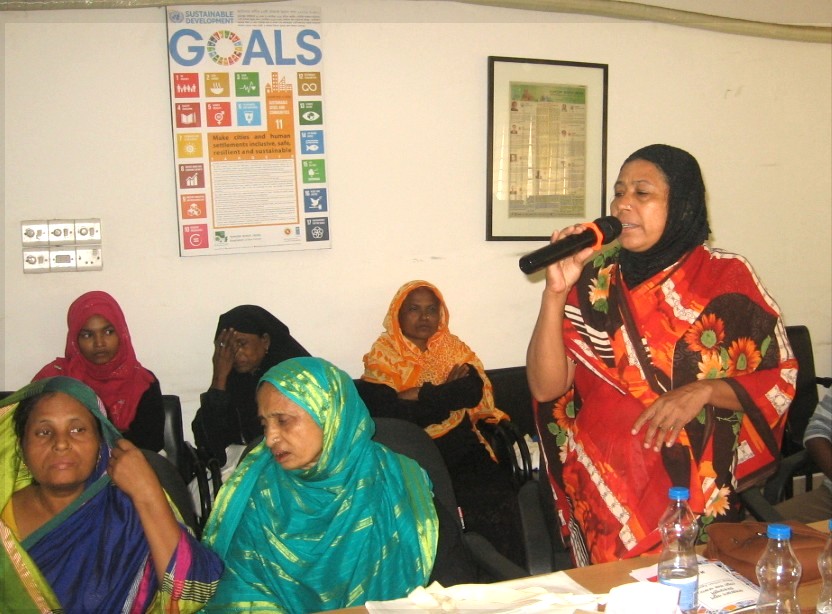
“We created an approach called the leadership support process, where we learned how to work with each other. We learned how to set basic agreements for organizing. We learned how to respect each other. And we took time to really look at what each other was doing on the ground in their communities”. –
Jan Peterson, co-founder of the National Congress of Neighborhood Women and the Huairou Commission
What is the Leadership Support Process?
The Leadership Support Process (LSP) is an authentic grassroots women’s leadership capacity building and support model. LSP tools are simple but powerful, practical ideas and methods that support grassroots women as they become more effective advocates for themselves and their communities. The Leadership Support Process utilizes techniques and methods of grounding to ensure attentive, active and respectful listening and participation in group meetings, which in turn set the stage for productive and empathetic organizing. It also helps to promote leadership and personal commitments balance among grassroots women by helping them to ground in here and now. LSP builds strong organizations, partnerships and movements by developing connected, reflective and empowered individual leaders.
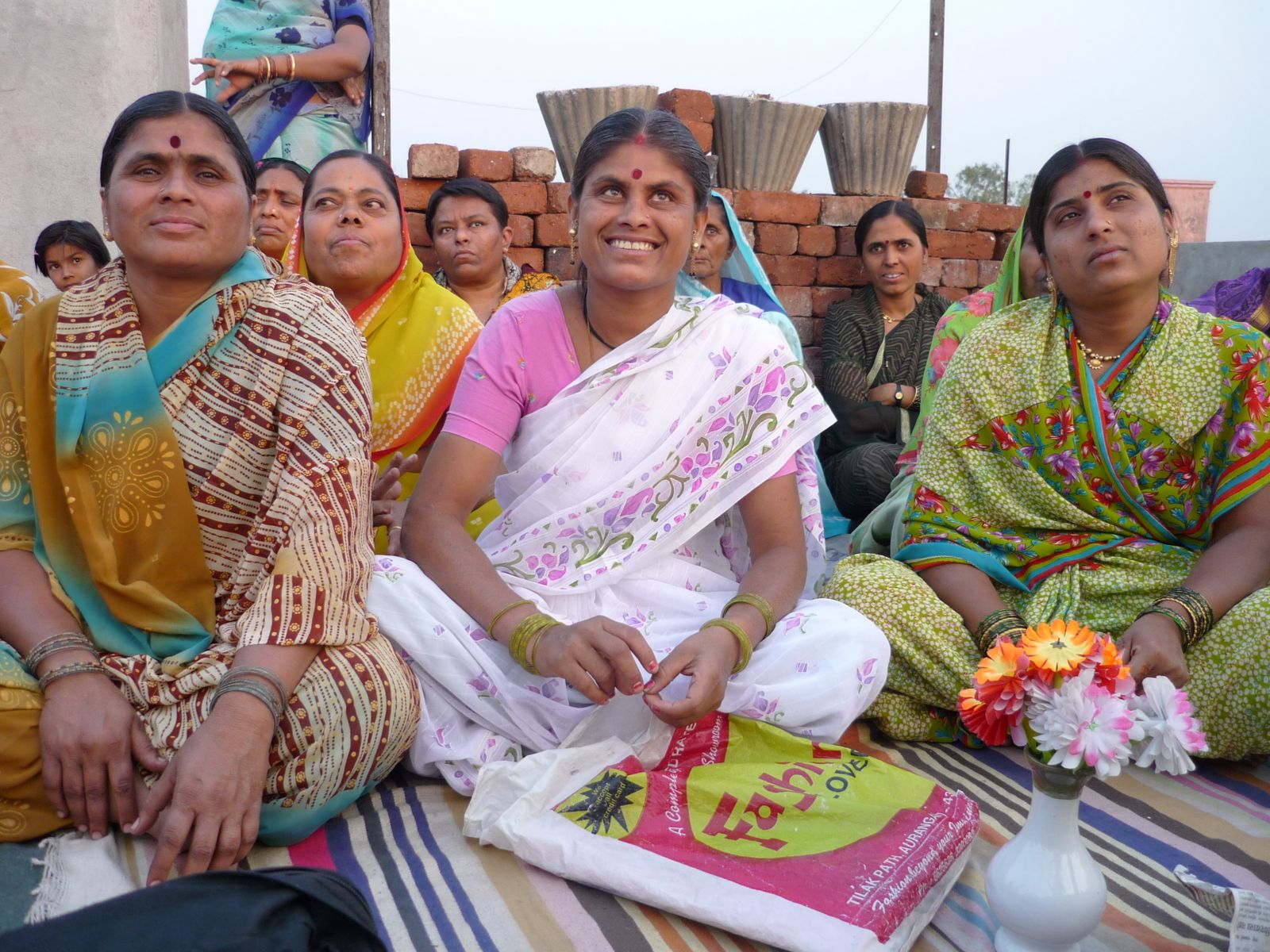
“Seemingly simple things, like sitting in circles during meetings, establishing basic agreements, including “no put downs” of oneself or others, allocating equal speaking time, asking thought out questions for both – personal and community work check ins, identifying a group leader to facilitate and hold the group accountable to the agreed upon time limits, content and format questions, truly transformed our capacity to learn from each other and grow as leaders.”
– Lisel Burns , co-founder of the Neighborhood Women’s Leadership Support Process
Community Resilience Fund (CRF)
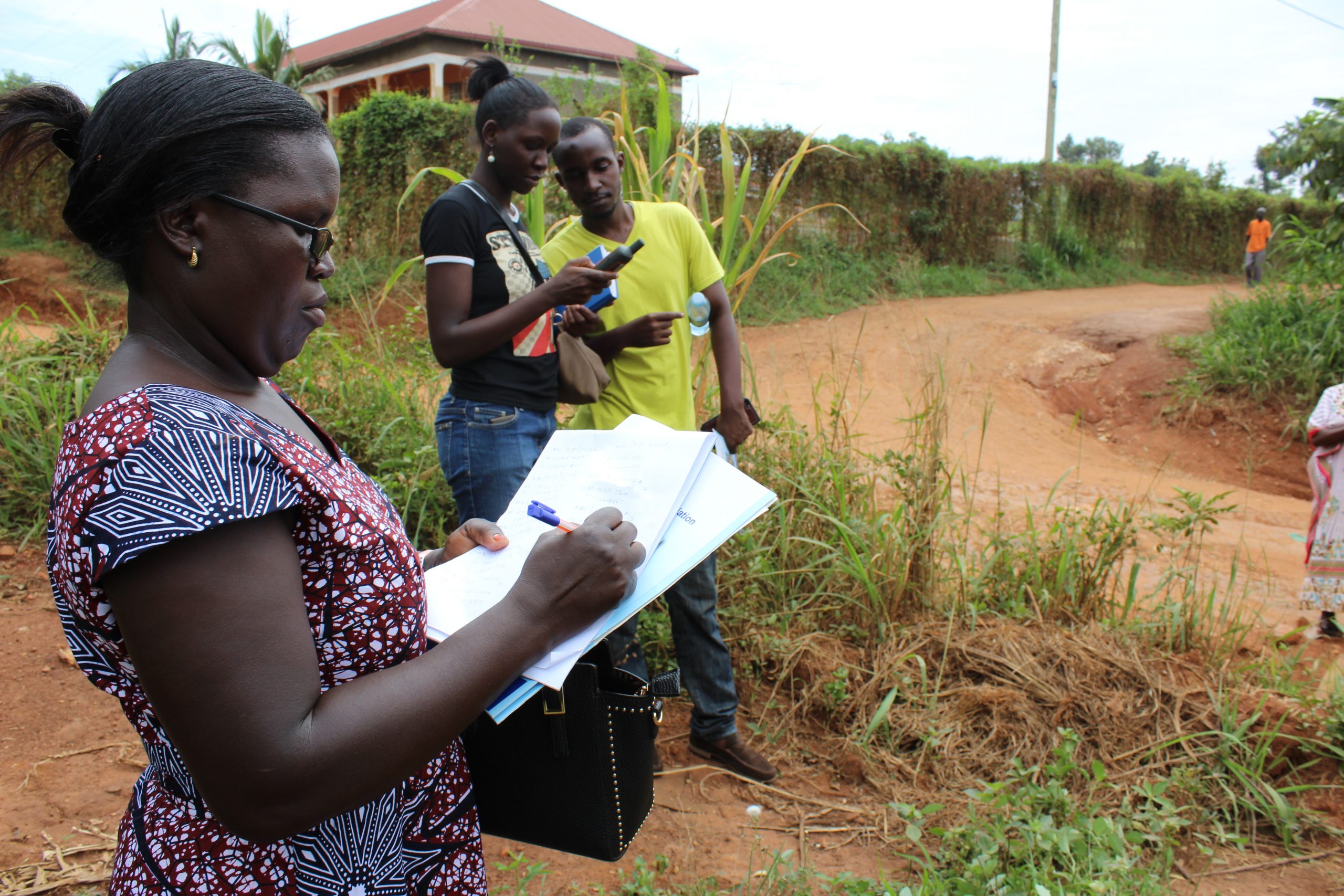
What is the Community Resilience Fund?
The Huairou Commission’s Community Resilience Fund (CRF) operates across 21 countries and channels resources to organized groups of women in poor, rural and urban hazard-prone settlements, enabling them to mobilize collaborative resilience practices that reduce community vulnerability to natural hazards and climate change. These organizations have used CRF to: Enable grassroots women to take public leadership in identifying and addressing climate, disaster and other risks, collaborate with local governments to leverage resources, and sustain and scale up grassroots-led resilience-building effort. The CRF is also a platform for demonstrating the innovations and expertise of grassroots women’s groups, attracting greater public recognition and support for their roles in addressing climate change and development challenges.
